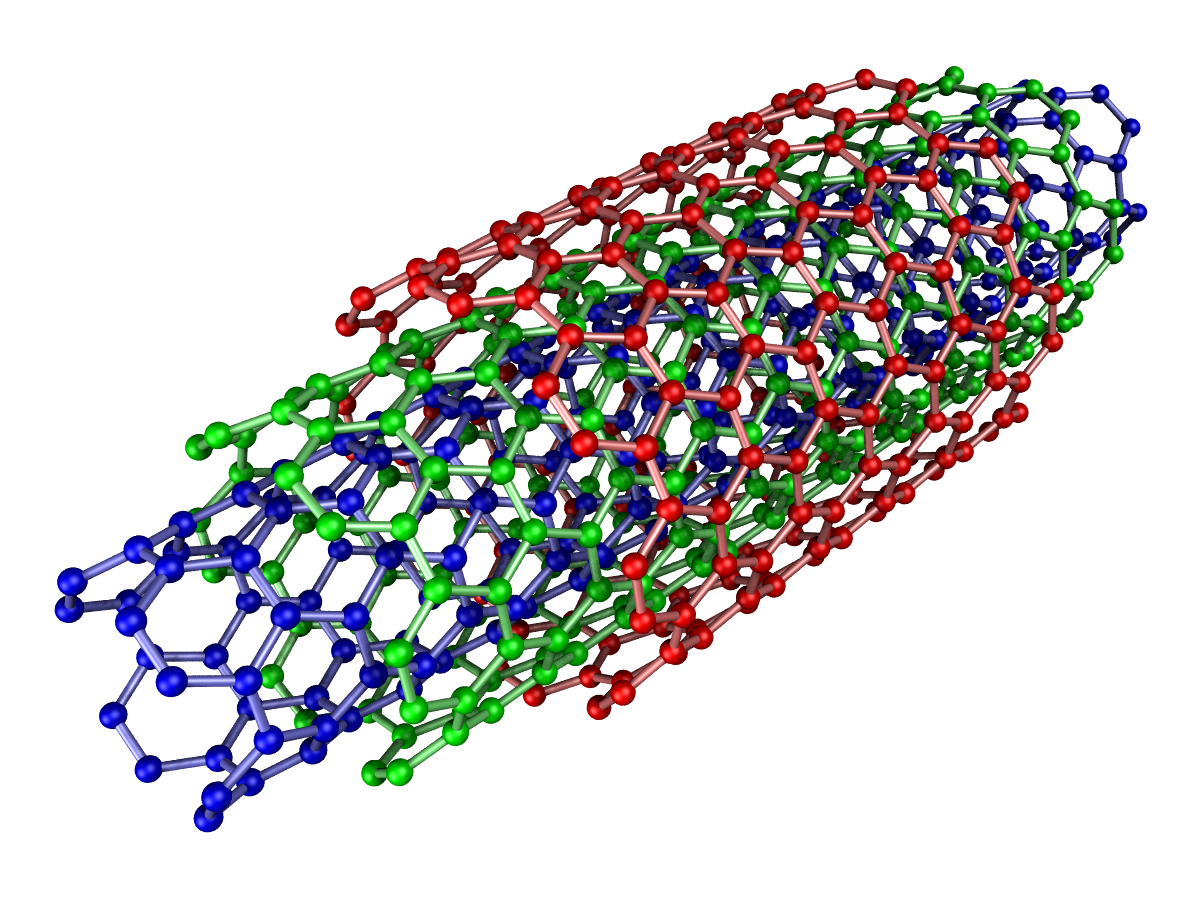you can read with this saguar.mp3 🙂
Well, one fine day in NEC Laboratory, Japan, electron microscopist Iijima discovered the multiwalled carbon nanotubes by using transmission electron microscopy. He was studying the arc evaporation synthesis of fullerene structures. Carbon nanotubes are the long and thin chains of carbon, basically they are composed of graphene layers rolled into cylindricals. These cylinders have just a few of nanometer diameter and can be tens of micronmeter long and each end is ‘capped’ with a half of a fullerene molecule.

Multi walled carbon nanotube
They can have a unique walled structure or multiple walled structures (single walled and multi walled carbon nanotubes).So what makes us eager to study them further is their extra ordinary theoretical properties which by them we may not need any other materials in our daily life. (I mean the potential usage:) ) They have excellent thermal, electronic conductivity and mechanical properties such as 1 TPa elastic modulus and 30 GPa tensile strength.

Carbon nanotube micrograph taken by using tranmission electron microscopy
Because of their sizes(macromolecules), their surface area is incredibly high, vary from 100 to 1000 m2/ gram, that is known to favour short distance filler-filler interaction, to increase the filler-matrix interactions and even to modify molecular mobility of an important matrix fraction near the surface.
Moreover, their electronic behaviour is changing depending on their chirality vector,
I would like to say for now, these were the commercial side of carbon nanotubes. It is also very challenging and making people sick to study carbon nanotubes (at least this is what I experience 🙂 ).Although all these afore mentioned promising values, significant hurdles still exist on the road. Most important of those are dispersing the carbon nanotubes into a solvent to be able to use them effectively in broad range of applications and aligning them towards to desired direction.
In short, I’ll post another series of writings regarding what lies beyond the thermodynamisc of CNT dispersion and what should we do to be able to use carbon nanotubes in our research. It is mainly my MAT501 Thermodynamics project and I’ll be glad to share it here for the people concerned.
Bir cevap yazın